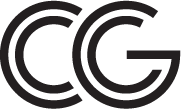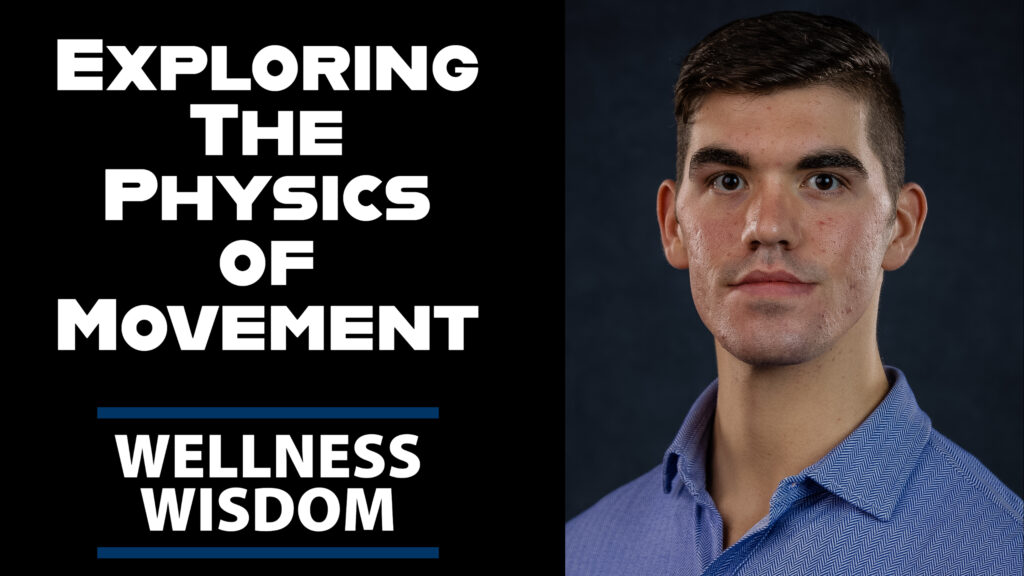Understanding and applying physics allows us to master our movement through the world. Muscles contract which can pull bones into movement or resist forces across joints. Let’s explore the simple principles that make this possible.
-
- Concentric Movement:
- Force generated is greater than the resistance.
- When you raise a drink to your face with your biceps you shorten the muscle concentrically. This contraction only involves muscle fibers in the force generation.
- Eccentric Movement:
- Force generated is less than resistance.
- When you lower your drink to the table, your biceps control the descent with a contraction. Eccentrics are performed in the downward movement of exercise, i.e. lowering yourself from a pullup bar.
- During eccentric training we can generate peak force because our noncontractile tissue contributes resistance to lower the weight.
- Isometric Movement:
- Force generated is equal to resistance: Holding an air squat for 1 minute
- Concentric Movement:
How do our muscles perform all these movements?
Levers:
-
-
- Think about when you were last on a teeter-totter. There was a board which rested on a fulcrum. Each end of the board created a lever which could be acted on by each person.
- The person with the most mass would cause the board to tip down and form resistance. In contrast, they may push their legs into the ground to create a muscular force.
- This is a first-class lever, where the resistance and muscle force act on different ends of the fulcrum. The muscles in our bodies work by acting on our bones and joints in the same way.
- Think about when you were last on a teeter-totter. There was a board which rested on a fulcrum. Each end of the board created a lever which could be acted on by each person.
- Mechanical Advantage:
- The longer a lever, the easier it is to generate torque, which is the degree to which a force will rotate and object about a fulcrum.
- You know this implicitly, think about opening a heavy door. If the doorknob is placed far from the hinge, this creates leverage to easily open the door because of the favorable moment arm. If the same door had the hand close to the hinge the lever is short and produces poor mechanical advantage.
- A second-class lever
- During a calf raise where the athlete pushes up with their calf onto their toes is easy for most people because of the large mechanical advantage. This is because the calf muscle is on the backside of the leg while the bodyweight moves through the midfoot. This means the force generated by the calf muscle moves across a longer lever compared to the resistance of the body with the fulcrum being over the forefoot.
- A third-class lever
- Most human movement is performed with third class levers which means the resistance arm is longer than the muscle force arm. During a bicep curl, the resistance arm acts on the entire length of the forearm while the biceps only act on a small portion. This means to flex the arm to move the weight, the muscles need to generate an incredible amount of force.
- The longer a lever, the easier it is to generate torque, which is the degree to which a force will rotate and object about a fulcrum.
-
Torque
-
-
-
- Torque allows you to manipulate everyday movement to accomplish your goals.
- Torque is the product of force and the length of the moment arm.
- Torque explains why the most difficult part of a bicep curl is when the arm is bent 90°. This is because that is where gravity’s force is the greatest due to the long lever arm. Understanding torque can be beneficial because it allows you to control mechanical advantage.
- We were all born with a specific biomechanical blueprint based on where our tendons were inserted.
- If your tendons were placed far from the joint center this allows you to generate more torque because of the longer lever arm.
- However, a longer lever means less max speed because the muscle needs to contract more to move the joint the same distance.
- If your tendons were placed far from the joint center this allows you to generate more torque because of the longer lever arm.
-
-
Acceleration
-
-
- Velocity describes the movement and direction of a movement. Acceleration is how fast that velocity changes.
- This is related to Newton’s second law-
- Force=Mass X Acceleration
- For athletes, speed is a key component of daily life. For example, athletes who can accelerate their mass well have an immense advantage over slower opponents in every sport.
-
Power
-
- Rate is the rate work is performed where Work is the product of force and displacement.
- The concept of work can be used to quantify the volume of a lifting session. You can measure the vertical distance a bar travels in a deadlift to find displacement and multiply the mass in kilograms of the weight by gravity to find force.
- If you did 10 repetitions for 3 sets you could find the total volume of work which you could then modulate week to week depending on your goals.
- The concept of Power is important because to remain functional in society you must be able to produce a certain amount of power. To cross the street under a time constraint requires power.
- To find power, you simply consider how long it took you to perform that work which would give you average Wattage. For a cyclist, they frequently use watts and heart rate to program their training so they can track their intensity level.
- The sport of powerlifting has corrupted the definition of power. Powerlifting implies lifting a weight as fast as possible. While the object of powerlifting is to lift as much weight as possible, usually at slow velocities.
- Rate is the rate work is performed where Work is the product of force and displacement.
Strength
-
- Ability to exert force at any given velocity. The weight you can lift is a traditional measure of strength. Recently, grip strength has been used to gage the strength of your muscles and nervous system as you age. This is an isometric measure that has been used in the literature to link increased risk of mortality and other comorbidities to weakness and aging. Fortunately, strength is very modifiable.
- How can we change strength?
- Neural control
- Our nervous system uses action potentials to recruit muscle fibers, and our ability to activate muscle requires our mastery over this physiology.
- When we first exercise, the increase in strength is mostly due to our ability to communicate with our muscles to activate.
- Resistance and cardio exercise are a terrific way to begin training your nervous system.
- Muscle fiber arrangement AKA pennation
- Muscle fibers can be straight and long like your abs have more muscle fibers stacked end to end so can contract more quickly.
- Muscle fibers that are feathered like your quadricep muscles are at an angle to produce a larger amount of force at a slower rate. This is because more pennation allows more muscle fibers to be stacked tightly together.
- Muscle length
- A sarcomere is an important concept to nail down here. Sarcomeres are the basic unit of muscle contraction, when a muscle shortens, it is because hundreds of sarcomeres decrease their length. This shortening happens due to the sliding filament theory. To optimize for this theory, the largest amount of force can be produced at resting length because actin and myosin have the most potential cross bridges to form.
- To fully explain this would take an entire article on its own, but the number of cross bridges between actin and myosin at any given time correlates to the magnitude of force we produce.
- Joint angle
- Because the lever arm changes throughout the range of motion, the capacity to exert force too changes with the joint angle.
- Contraction velocity
- As you contract faster through a range of motion, there is less time to generate cross bridges to generate tension.
- Eccentric contractions at slow joint angular velocity can produce the most force.
- Cross-sectional area AKA CSA
- Taller athletes produce the same strength with more volume of muscle due to the need for longer muscle bellies.
- CSA is the same, but the volume is greater in a taller person
- Tall athletes have a reduced ability to lift and accelerate their own body weight.
- Neural control
Strength-to-mass ratio
-
- When body size increases, muscle volume and body weight increase proportionately more than muscle CSA does.
- Smaller athletes are stronger relative to their body weight than larger athletes are
- As body size increases, mass increases more rapidly than muscle strength with more volume.
- When body size increases, muscle volume and body weight increase proportionately more than muscle CSA does.
Putting things into practice
-
- A low bar back squat
- The forward incline of trunk brings the weight horizontally closer to knees. This increases the moment arm on the glutes and hamstrings and reduces torque demand on the quads.
- Opposite pattern occurs in the high bar back squat
- The forward incline of trunk brings the weight horizontally closer to knees. This increases the moment arm on the glutes and hamstrings and reduces torque demand on the quads.
- The takeaway here is that with a little forethought, you can fundamentally change any movement to meet your goals.
- A low bar back squat
MY KEY LINKS:
- 💡 YouTube – https://www.youtube.com/@cartergansky
- 📸 Instagram – https://www.instagram.com/carter.r.gansky/
- 🐦 Twitter – https://twitter.com/CarterGansky
- 🌲 Linktree – https://linktr.ee/cartergansky
- 🔊 Discord – https://discord.gg/sQxvHH78Ga
WHO AM I:
I’m Carter Gansky, a fitness and health advocate and a Doctor of Physical Therapy in training. I explore the strategies and tools that help us live motivating, healthier, and more fulfilling lives.
GET IN TOUCH:
🧠 contactcartergansky@gmail.com
For collaborations or other business inquiries.



